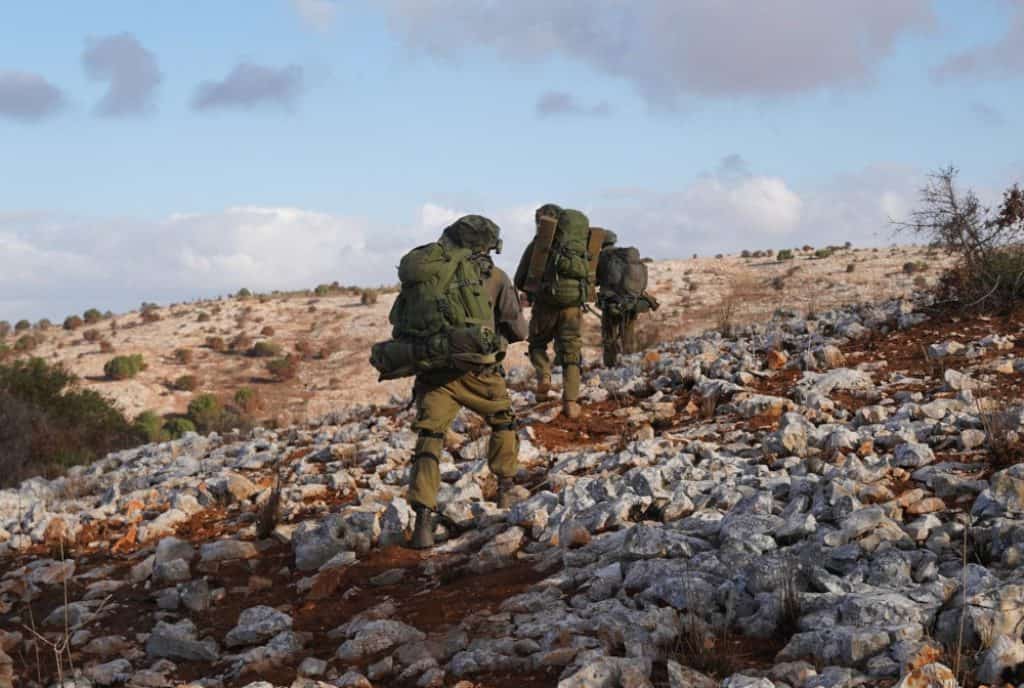
The Israel Defense Forces (IDF) announced the deaths of nine soldiers killed in fighting in southern Lebanon in operations between October 1 and 2. The first eight deaths happened during one of the opening battles of the war in a village in south Lebanon. Most of the soldiers were from Israel’s elite Egoz Unit. Another paratrooper was killed in a separate incident. The casualties occurred as the IDF sent a second division into Lebanon and contended with continuing rocket fire from Hezbollah.
The IDF’s initial advance into Lebanon was led by the Israeli Army’s 98th Division, which includes paratroopers, commandos, and the 7th Armored Brigade. The unit was transferred from the Gaza border in early September and had been training for this operation. The IDF said that “forces from the Commando Brigade, including soldiers from the Egoz Unit, located and destroyed a Hezbollah attack infrastructure, which included a rocket launcher, explosive stockpiles, and additional military equipment.” These troops destroyed 150 Hezbollah structures or “terrorist infrastructure” in cooperation with the Israeli Air Force, including a “Hezbollah headquarters, weapons storage facilities, and rocket launchers.”
During the first day of battle on October 1 to October 2, at least 240 rockets were launched from Lebanon at Israel. During the same period, the IDF estimated that 60 Hezbollah members were eliminated and several hundred targets struck. The IDF continues to hit Hezbollah sites in Beirut and southern Lebanon. For instance, overnight between October 2 and October 3, numerous large airstrikes were reported in Beirut.
The IDF also sent the 36th Division, with its Golani infantry and 188th Armored Brigade, into Lebanon, the second division to take part in the battle. The 6th Reserve Infantry Brigade, known as the “Etzioni,” was sent in as part of the 36th Division. The IDF also said that “additional forces are joining the limited, localized, targeted raids on Hezbollah terror targets and terrorist infrastructure in southern Lebanon that began on Monday.”
During these opening moves of the operation, the IDF has called on the residents of several dozen Lebanese villages to evacuate north of the Awali River, which is around an hour’s drive from Israel’s border, approximately 45 miles. The calls for people to evacuate southern Lebanon are comprised of a series of lists of villages that the IDF has released in Arabic.
The IDF’s Egoz Unit was founded in the mid-1990s to conduct counter-terrorism operations primarily focused on southern Lebanon, when the IDF controlled a security zone there. The unit grew out of the IDF’s Golani Infantry and trained with Golani until it transferred to the Commando Brigade.
The battle in which the first Israeli soldiers fell in southern Lebanon took place at a village the IDF did not name. It said the soldiers encountered a number of Hezbollah fighters in a building and took fire from several directions, including anti-tank missiles and mortars. Israeli forces took time to extract the killed and wounded soldiers, using tank fire and airstrikes in support. The IDF estimated that 20 Hezbollah members were killed in the clash. Along with the deceased members of the Egoz Unit, an IDF combat engineer and two members of the Golani Brigade’s recon unit also fell. On October 2, another IDF soldier, Captain Ben Zion Falach of the 202nd Battalion, Paratroopers Brigade, was also killed. Others were wounded in the fighting, illustrating the capabilities Hezbollah possesses in southern Lebanon.
On October 3, the IDF said the Golani Brigade pressed forward in Lebanon, uncovering Hezbollah weapons and destroying structures with the aid of the Israeli Air Force. “Among the weapons found were firearms and observation equipment,” the IDF said. The 6th Brigade also “conducted targeted raids to thwart and destroy the terrorist infrastructure of the Hezbollah terrorist organization.”
The IDF also said it eliminated the Hezbollah commander responsible for launching a rocket at the Golan on July 27. The rocket killed 12 children and teens in Majdal Shams, a Druze town. This Hezbollah commander was a key part of the group’s operations against Israel in the Mount Dov, Mount Hermon, and Golan areas.
On October 3, Hezbollah launched at least 120 projectiles at Israel, most of them fired close to the border. The Hezbollah attacks continued throughout the day, showing that the group retains the capability to maintain pressure on Israel. In addition, the IDF intercepted several drone threats in northern Israel. One of them was shot down off the coast of Nahariya. Two more drones were detected off the coast of Bat Yam, near Tel Aviv. The IDF did not identify where they were launched from, but the Iranian-backed Houthis in Yemen have tried to attack Tel Aviv with drones in the past. Another drone was intercepted in southern Israel.







